9.1 Sack or Case Truck
9.2 Jak-tug
9.3 Hand-drawn Truck
9.4 Electric Tow and Platform Trucks
9.5 Hand Pallet Truck
9.6 Powered Pallet Truck
9.7 Fork Lift Trucks
9.8 Roller Conveyors
9.9 Powered Belt Conveyors and
Elevators
9.10 Flumes
The following range of machines or devices are commonly used as handling aids in the fishing industry. The range is wide and the use of a particular type will depend upon the total load to be carried, the unit load, cost of labour/machine, the distances involved, the floor surface and consideration of maintenance, etc. A brief description of types is given followed by Table 21 which gives prices and capacities.
A very simple manually operated two-wheel unit suitable for handling individual or small numbers of stacked fish boxes. Of limited capacity and normally used only over short distances.

Figure 25. Sack or case truck
A rigid platform with wheels at one end which can be manouvered manually by the use of a towing unit that lifts and supports the other end. Restricted to use on more or less level floor.
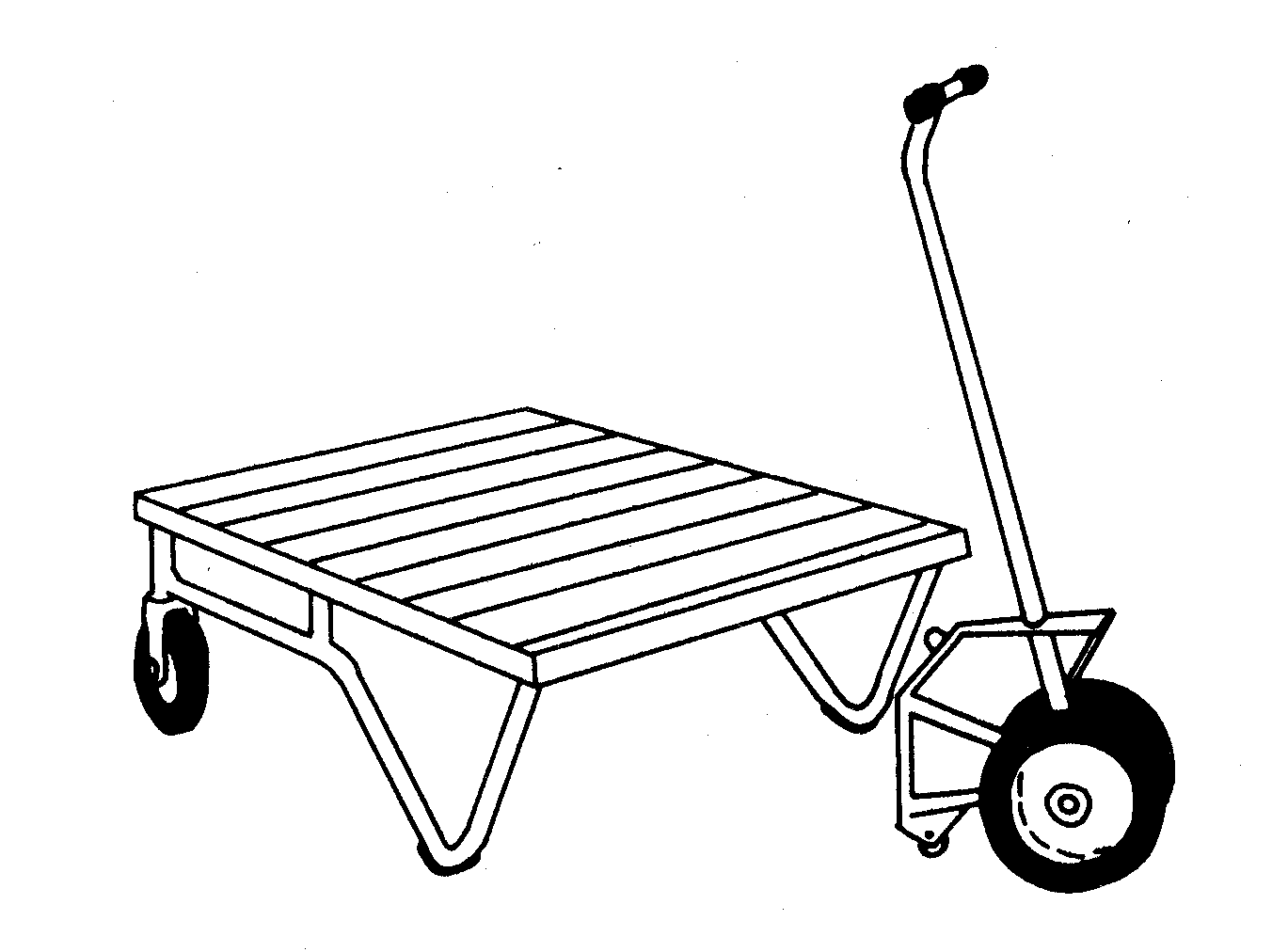
Figure 26. Jak-tug
A four-wheeled manually operated truck suitable for loads of up to 1 t. Steering is either by means of a turntable assembly or by a central pivot connected to the steering wheels by track rods. The track rod type of truck is preferred as the wheels remain under and give support to their respective corners on turning. The turntable type has a tendency to tip when negotiating sharp turns if unevenly loaded.
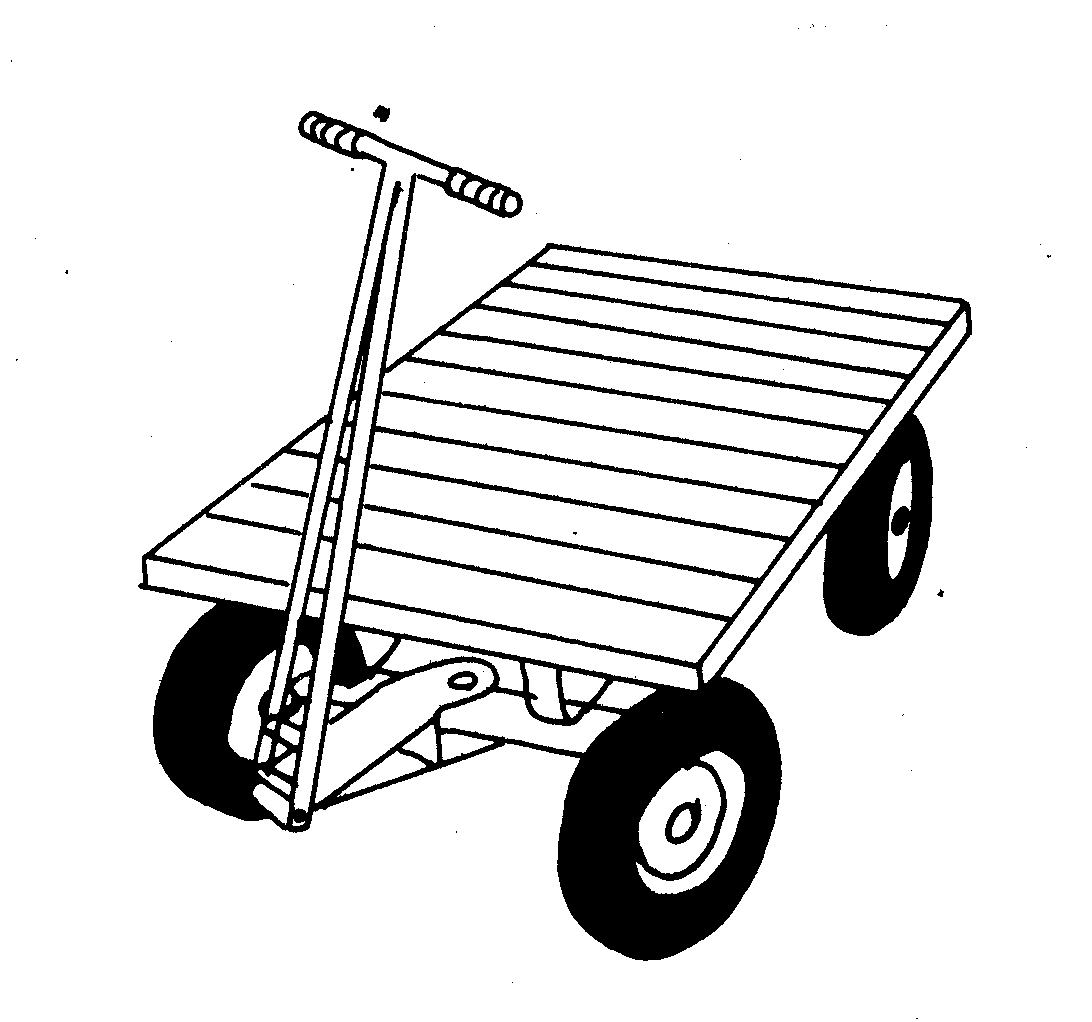
Figure 27. Hand-drawn truck
They are basically battery-operated versions of the manual equivalent, which are better suited for handling greater loads over longer distances. Diesel versions are also available but should not be used in markets or processing factories where fumes and oil spillage can lead to contamination of product or be a hazard to operators. Gradients of 1:10 can be negotiated under load on floors that need not be smooth. Facilities are required for re-charging of batteries.
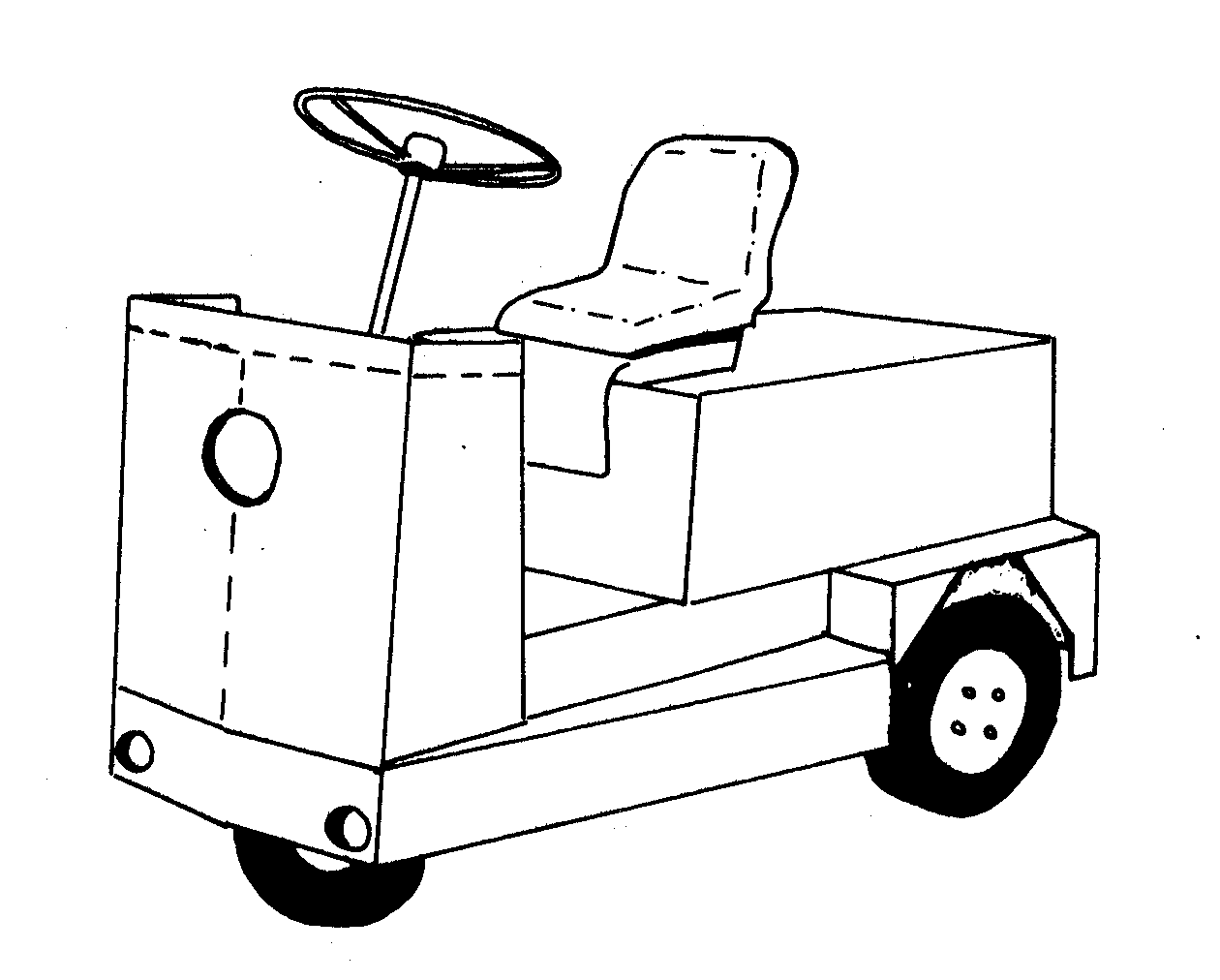
Figure 28. Electric tow tractor unit
A manually operated truck for use with palletized loads. It consists of two forks and a steering unit. The forks are entered into the pallet which is raised by a hand-operated hydraulic pump, until the load is clear of the ground. Because of the relatively small wheels required for entry into the pallet the floor needs to be smooth and fairly level. Simple modification by means of a frame fitted over the forks makes it suitable for transport of stack/nest types of fish box. It is particularly useful in box, pool or factory operations and eliminates wear caused by dragging or pushing boxes over concrete surfaces.

Figure 29. Hand pallet truck
An electrically powered truck similar to the hand pallet truck which can be pedestrian or rider-operated depending on design. Quicker in operation than the hand pallet truck and more suited to greater loads and distances. inclines. Can be operated on fairly uneven surfaces and inclines.
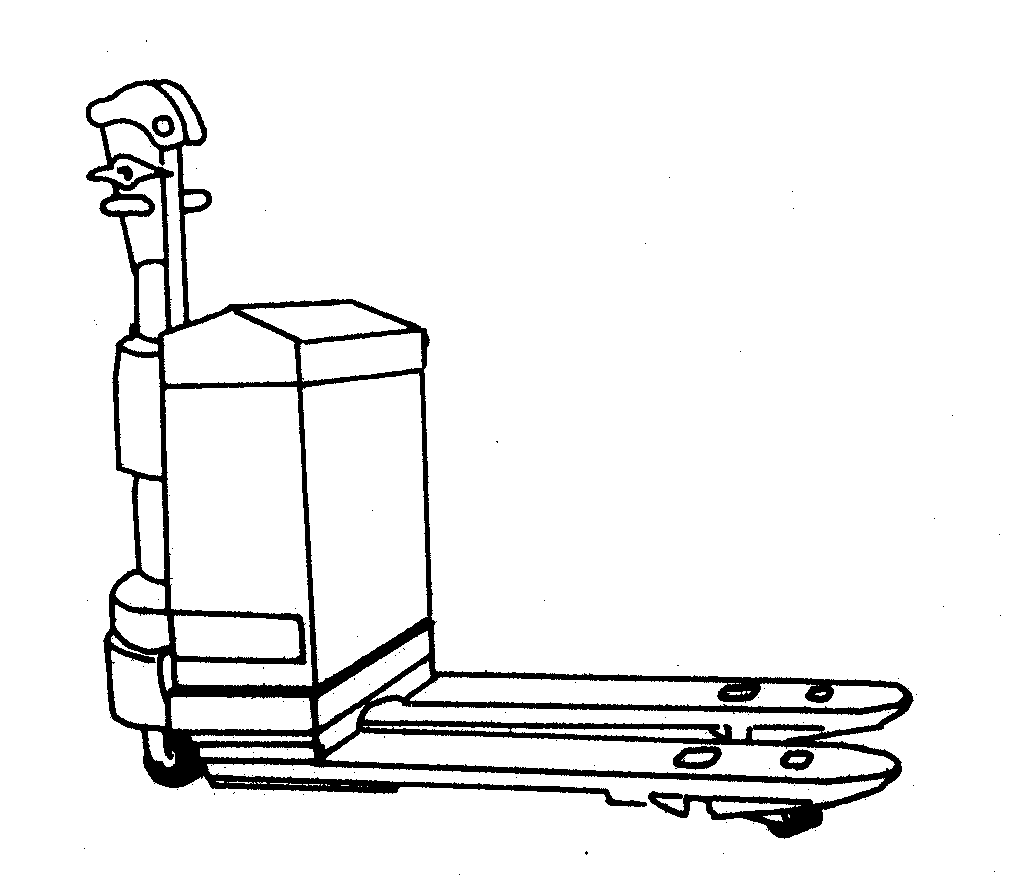
Figure 30. Powered pallet truck
Similar to the pallet truck but with the capacity of lifting the load much higher. The forks do not contain the wheels and the load is balanced by the weight of the truck. They can be pedestrian or rider-operated depending on design, and are particularly useful for loading and unloading of road transport, stacking within chill stores and movement of processing machinery.
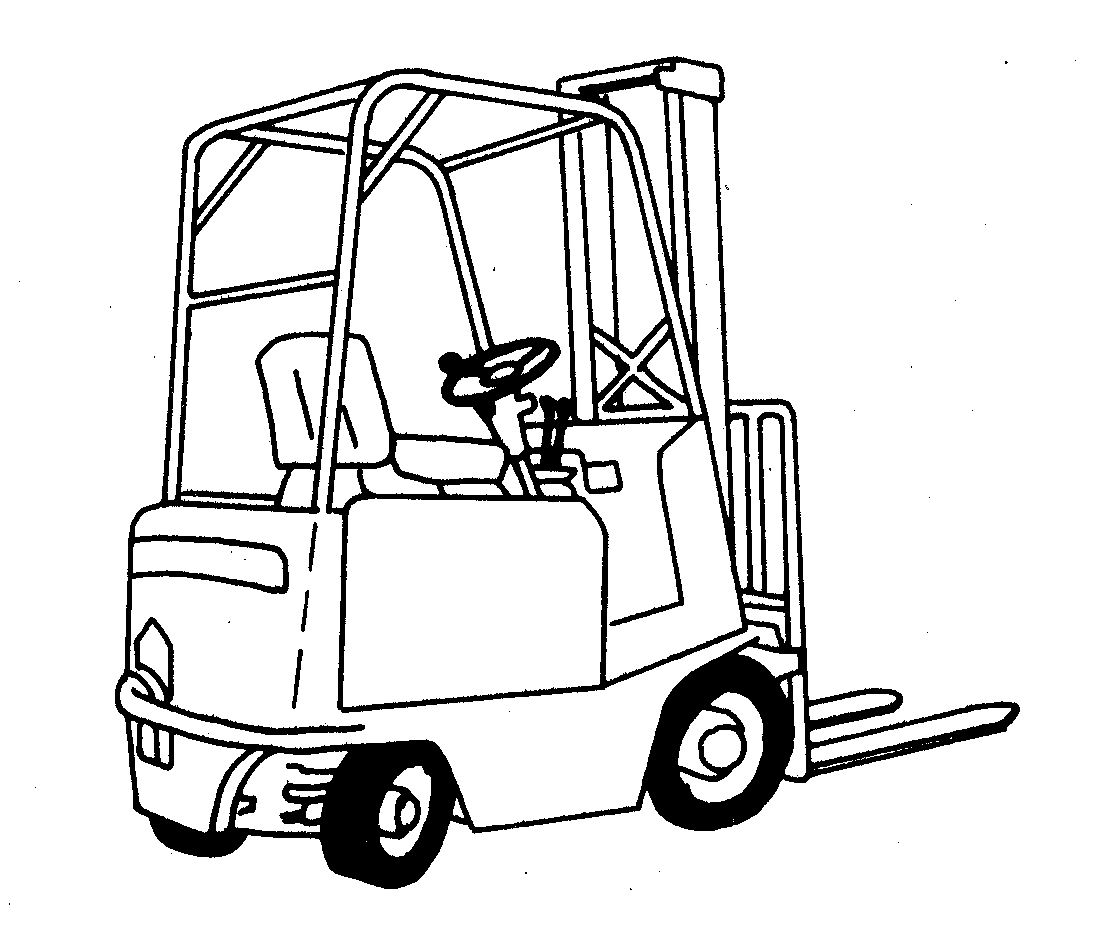
Figure 31. Rider electric fork truck
Gravity roller conveyors are commonly used for the handling boxes or cases 'horizontally' over short distances. Powered rollers can be used over greater distances. Roller conveyors are available in unit lengths both straight or curved sections or can be specifically designed for intended application if the scale warrants it. Portable and expandable units are also available which can be removed or contracted to save space when not in use. Electrically powered units should be fitted with waterproof motors. Both powered and gravity rollers should allow efficient cleaning.
Belt conveyors and elevators are commonly used for transportation of whole fish, fillets offal and other fish products. Wherever the product comes into contact with the belt then the belt used must be of food quality grade and should not contain metal fasteners but be of the continuous type. Smooth finish PVC type belts are restricted to horizontal applications for the transportation of fish but rough top belts can be used up to a maximum inclination of 150 to horizontal if dry or 200 if wet for most species of fish. The belt should be fitted with a brush and/or wire to clean the returning belt surface. Variable speed belts are often a great asset where manual operations are performed along the belt length allowing the speed to be varied to suit the number or capability of the operatives. Stop or emergency buttons should be clearly seen and easily reached. For inclinations greater than the above slated-belt elevators are commonly used for transport of fish and offal. In a continuous process the speed of the elevator and design and spacing of the slats should be such as to deliver the required volume of fish.
Water flumes are often used for the transport of fish or removal of offal within a
processing factory as an alternative to a conveyor and can be built in the case of offal
removal beneath the floor provided easy access to the flume is allowed for. The degree of
inclination and volume of water flow required is dependent on the fish size and type and
the cross section and material of the flume. Trials have shown that for a 'U' section
flume of 46 cm width, using
15 litres/min water flow, inclinations of between 5-10� to the horizontal were required
depending on the size and type of fish.
Table 21 In plant transportation capacities/prices
| Type 1 | Characteristics | Capacity a/ |
Price b/ |
| Case truck | Can be made to suit box | 200 |
70 |
| Jak-tug | Platform 1 200 x 800 mm | 500 |
140 |
| Hand-drawn truck | Platform 2 000 x 1 000 mm | 1 000 |
360 |
| Electric platform truck | Platform 2 000 x 1 500 mm 2 kW motor 24 V battery 292 Ah at 5 h rate, 7.0 kWh Battery charger |
Carry 1 000 |
5 500 |
| Electric tow truck | 1 kW motor 24 V battery 235 Ah at 5 h rate, 5.6 kWh Battery charger |
Tow 3 000 |
3 500 |
| Pallet truck | Width over fork 500-700 mm Fork length 800-1 200 mm Lifting height from 80-200 mm |
2 000 |
400 |
| Pallet truck (powered) |
As for pallet truck Lift motor 0.35 kW drive 0.75 kW 16 V battery 216 Ah at 5 h rate, 3.5 kWh Battery charger |
2 000 |
5 700 |
| Pedestrian fork lift truck |
Fork spread 260-800 mm Lift 3 300 mm Drive 1.0 kW Lift 2.0 kW 48 V battery 85 Ah at 5 h rate, 4.1 kWh Battery charger |
1 000 |
10 500 |
| Rider electric fork truck |
Fork spread 260-900 mm Lift height 3 300 mm Drive 5.6 kW Lift 6.3 kW 72 V battery 235 Ah at 5 h rate, 16.9 kWh Battery charger |
18 500 |
|
| Roller conveyor (gravity) |
35 mm roller; 180 mm pitch 600 mm wide point finish 3 000 mm length |
100 |
|
| Powered belt conveyor (food quality belt) |
3 000 mm length 200 mm wide belt Drive 1.5 kW |
1 600 |
|
| Powered belt conveyor (standard belt) |
3 000 mm length 600 mm wide Drive 2.0 kW |
1800 |
a/ The capacity given is for the unit described under characteristics. The
capacity range given below this is the range of units
b/ These are prices ex-works UK (1979)